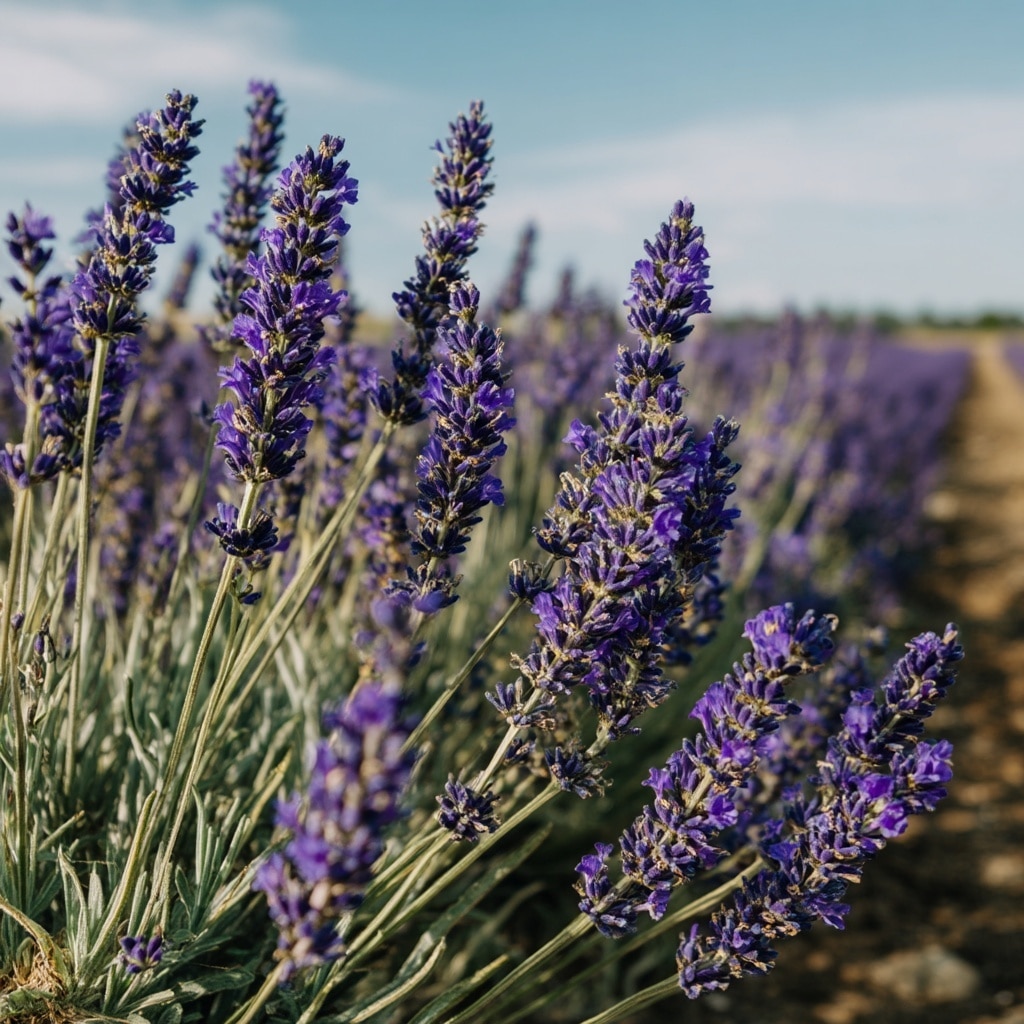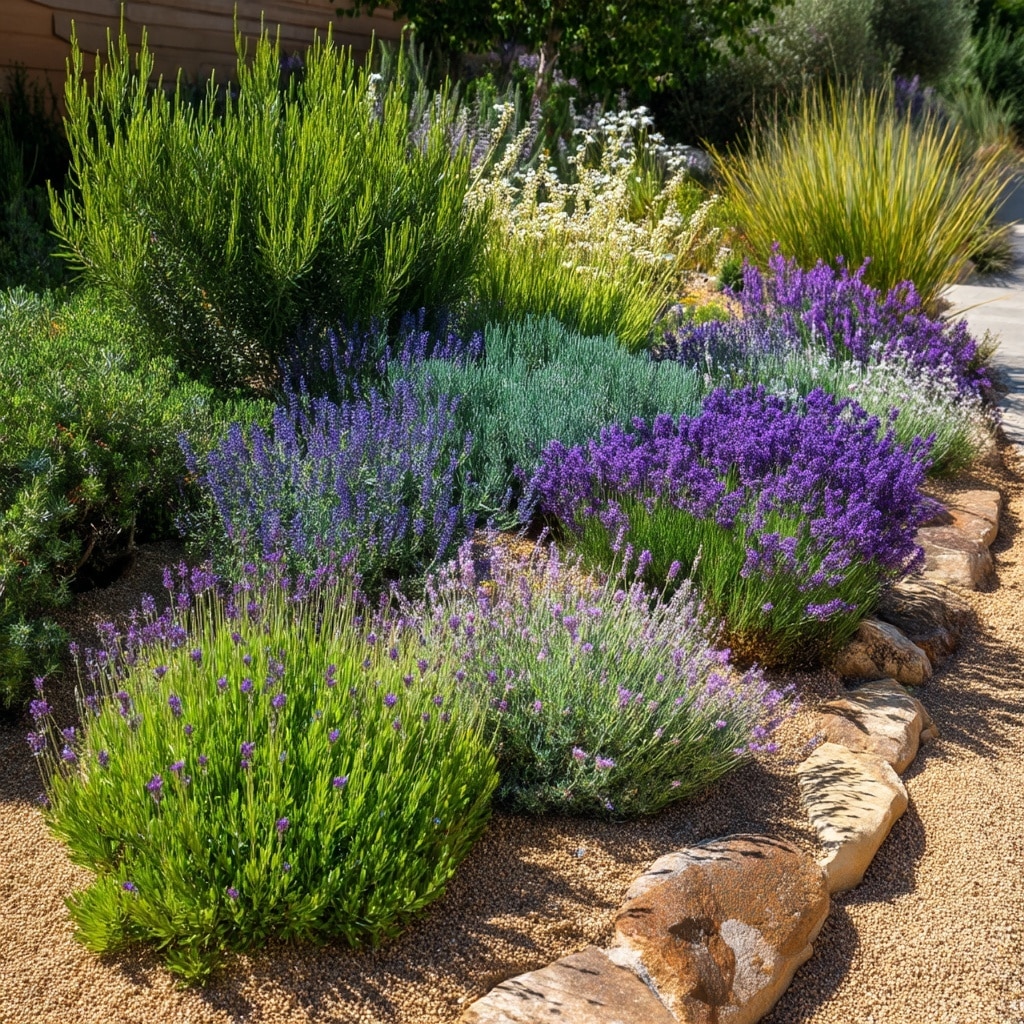Lavender is more than just a fragrant herb—it’s a garden favorite that brings beauty, pollinators, and purpose to any outdoor space. Whether you want to add soothing color to your borders, freshen up your patio with a potted plant, or harvest blooms for crafts and culinary use, there’s a lavender variety to fit your vision. But not all lavenders are the same. Some love the heat, others prefer cooler summers; some are ideal for edible gardens, while others shine purely for their floral show. Choosing the right type of lavender ensures healthy plants and blooms that keep returning year after year.
Choosing the Right Type of Lavender
Before planting lavender, it’s important to match the right variety to your climate, soil, and intended use. While all lavenders share similar traits—fragrance, beautiful blooms, and drought resistance—their growth habits and preferences can vary significantly.
🔍 Key Factors to Consider:
- Climate:
Some lavenders thrive in cooler zones, while others demand heat and dry air. Check your USDA hardiness zone before choosing a variety. - Soil & Drainage:
All lavender types prefer well-drained soil. Heavy clay or overly wet conditions can lead to root rot, especially for more delicate varieties. - Sunlight:
Lavender loves full sun—at least 6 to 8 hours daily is ideal for healthy blooms and strong fragrance. - Purpose:
Are you planting lavender as an ornamental border? For essential oils? Culinary use? Some types, like English lavender, are better suited for cooking, while others excel as cut flowers or landscape anchors.
By understanding your garden’s conditions and your goals, you’ll be better equipped to select the ideal lavender plants for lasting success.
English Lavender (Lavandula angustifolia)
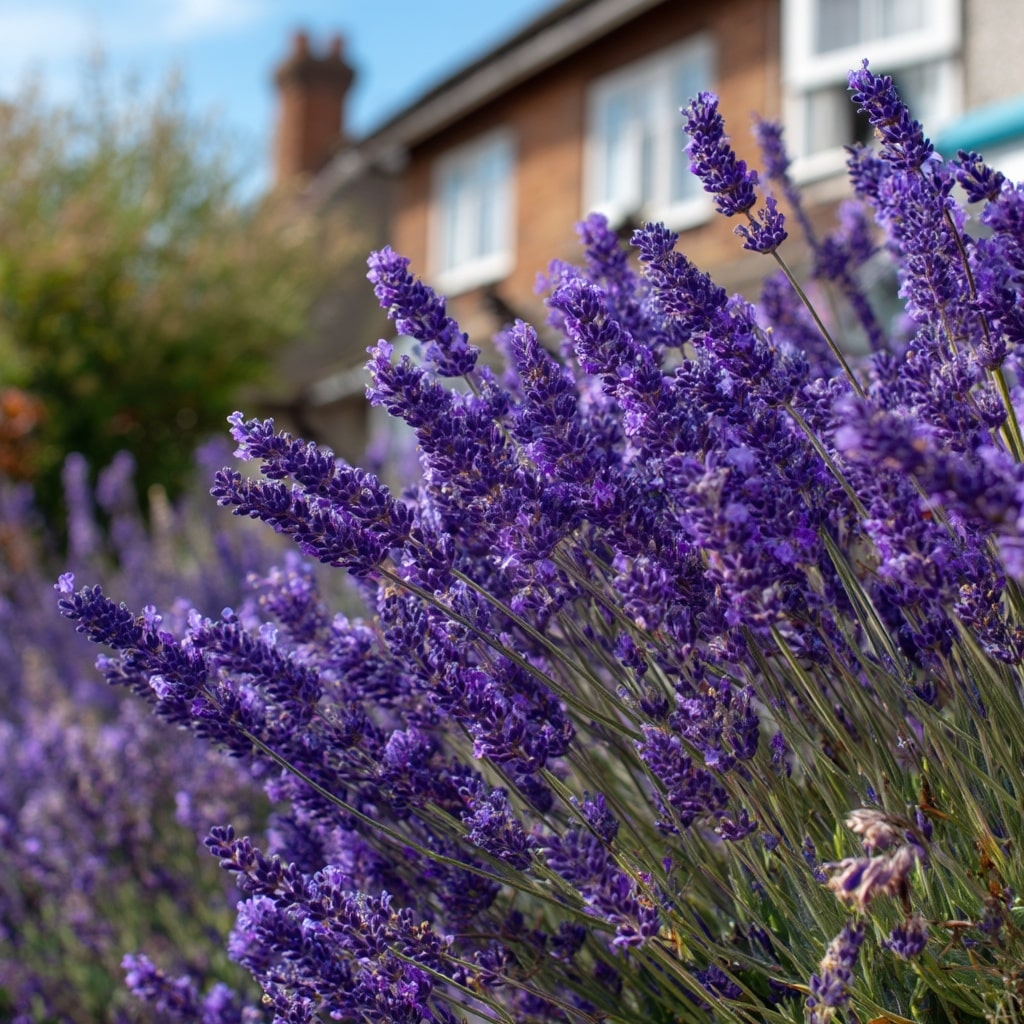
Often considered the classic choice for home gardeners, English lavender is prized for its soft fragrance, tidy shape, and culinary-friendly blooms. Native to the Mediterranean, it’s well-adapted to a range of temperate climates and performs best in regions with cool summers and dry air.
🌸 Key Features:
- Bloom Time: Early to mid-summer
- Fragrance: Sweet and calming, ideal for sachets and teas
- Hardiness: USDA zones 5–9
- Growth Habit: Compact and upright; great for borders and edging
English lavender is often referred to as “true lavender,” especially when used in cooking. Unlike other types, its essential oils are milder, making it perfect for baking, infusions, or edible garnishes.
🌿 Popular Varieties:
- ‘Hidcote’: Deep purple flowers and compact shape, great for hedges
- ‘Munstead’: Lighter lavender hue, blooms early, excellent cold tolerance
If you’re planting for fragrance, culinary use, or dried floral crafts, English lavender is your go-to variety.
French Lavender (Lavandula dentata)
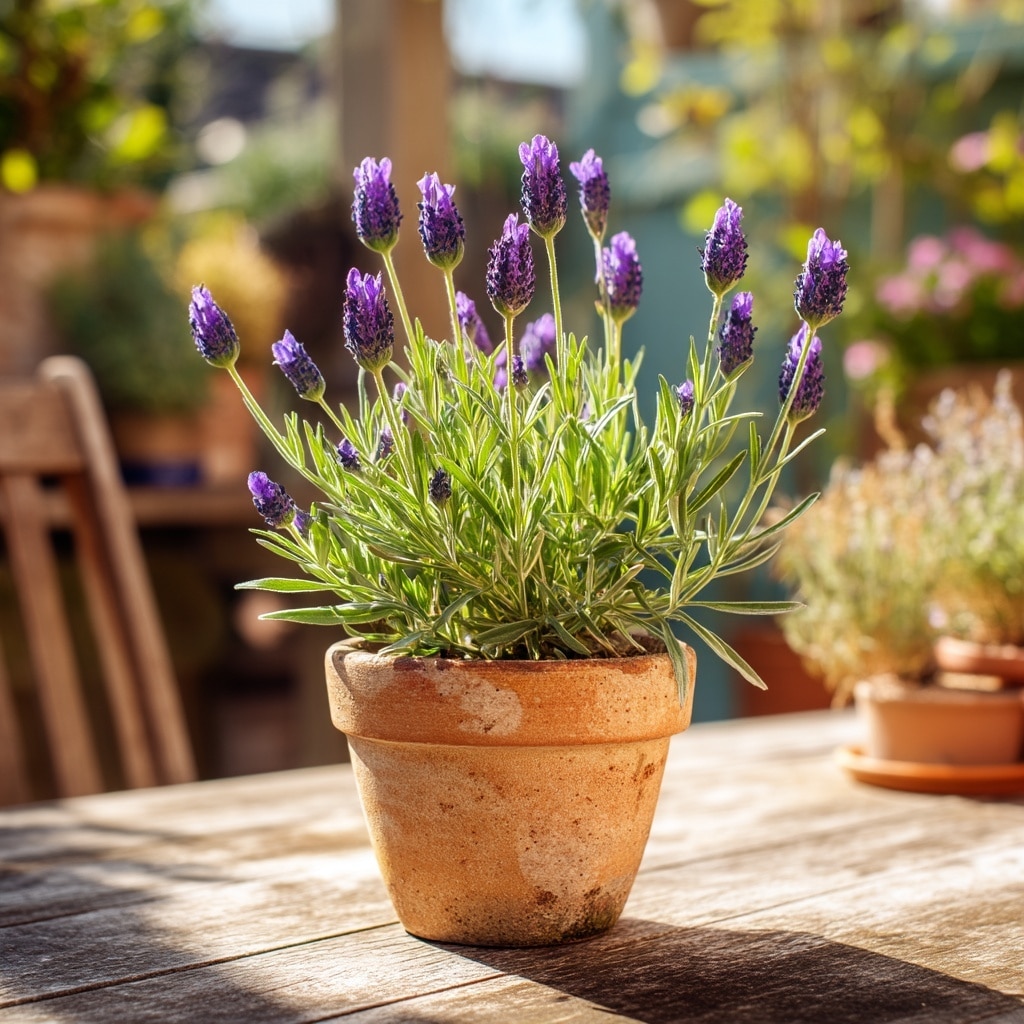
With its fringed leaves and long-lasting blooms, French lavender adds a uniquely elegant touch to any garden. This variety thrives in warmer climates and is known for its ability to bloom over a longer season, especially in mild winters.
🌸 Key Features:
- Bloom Time: Mid to late summer; often reblooms in warm areas
- Fragrance: Light and sweet, with a slightly resinous scent
- Hardiness: USDA zones 8–11
- Growth Habit: Bushy and open, ideal for containers or raised beds
French lavender is best suited for gardeners in hot, dry regions where other types may struggle. Its flowers are less commonly used in cooking but make beautiful additions to informal garden borders or Mediterranean-style landscapes.
🌿 Popular Variety:
- ‘Royal Crown’: Compact shrub, long bloom season, perfect for patios and pots
If you’re looking for a low-maintenance, sun-loving lavender to brighten up a warm garden or balcony, French lavender is a stylish and practical choice.
Spanish Lavender (Lavandula stoechas)
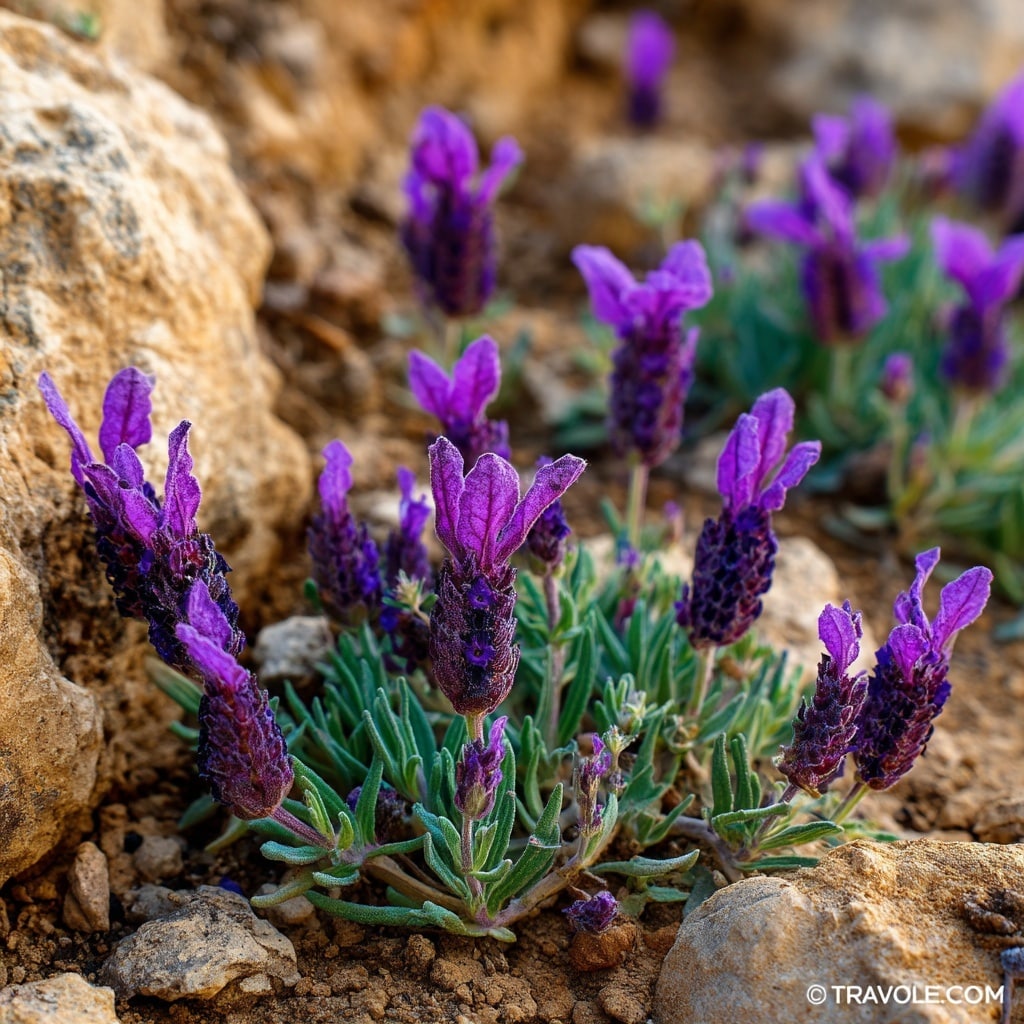
Spanish lavender stands out with its distinctive flower shape, topped by showy “rabbit ear” bracts that give it a whimsical flair. Native to the Mediterranean, this variety is a true sun lover and thrives in hot, dry climates where others may wilt.
🌸 Key Features:
- Bloom Time: Spring through early summer (may rebloom with pruning)
- Fragrance: Strong, pine-like scent with herbal undertones
- Hardiness: USDA zones 7–10
- Growth Habit: Compact and rounded; works well in rock gardens and containers
What makes Spanish lavender unique is its resilience. It handles drought and poor soil with ease, making it ideal for xeriscaping or low-water landscapes. While it’s not typically used in the kitchen, its ornamental value is unmatched, especially in mass plantings.
🌿 Popular Variety:
- ‘Royal Anouk’: Vigorous growth, early flowering, and striking deep pink-purple bracts
If you want a head-turning plant with bold personality and toughness to match, Spanish lavender is a smart, stylish choice for dry-climate gardeners.
Portuguese Lavender (Lavandula latifolia)

Often overshadowed by its more famous relatives, Portuguese lavender—also known as spike lavender—is a powerhouse in the garden. With its broader leaves and robust stems, this variety thrives in heat and dry conditions while offering strong fragrance and pollinator appeal.
🌸 Key Features:
- Bloom Time: Midsummer to early fall
- Fragrance: Bold and camphor-like, often used in essential oils
- Hardiness: USDA zones 6–9
- Growth Habit: Upright and bushy, good for large garden beds or mixed borders
Portuguese lavender is especially attractive to bees and butterflies, making it a top choice for eco-conscious gardeners. Its essential oil is highly aromatic and commonly used in soaps and natural cleaning products. Due to its size and strength, it’s also an excellent companion plant alongside vegetables and herbs.
🌿 Notable Traits:
- Broad, textured foliage stands out among other lavenders
- Well-suited to dry slopes, wildlife gardens, or herbaceous borders
If you’re looking to grow lavender that supports pollinators and handles heat with ease, Portuguese lavender is a dependable and fragrant addition.
Lavandin (Lavandula x intermedia)

A vigorous hybrid of English and Portuguese lavender, lavandin combines the best traits of both parents—hardiness, fragrance, and large flower spikes. It’s one of the most widely cultivated types of lavender for commercial use, especially in essential oil production.
🌸 Key Features:
- Bloom Time: Mid to late summer
- Fragrance: Strong, sharp, and long-lasting—great for oils and sachets
- Hardiness: USDA zones 5–9
- Growth Habit: Tall and wide; excellent for hedging or large landscapes
Lavandin plants produce tall flower stalks with silvery foliage, making them striking in both formal and informal settings. They’re also more cold-tolerant than French or Spanish types, and their tough constitution means they handle pests and diseases with minimal fuss.
🌿 Popular Variety:
- ‘Grosso’: Known for its intense scent and long stems, ideal for dried arrangements and oil distillation
If you’re seeking lavender that’s low-maintenance, highly aromatic, and reliable year after year, lavandin is a hardworking favorite for gardeners and herbalists alike.
Conclusion
With so many types of lavender available, choosing the right one depends on your climate, garden layout, and how you plan to enjoy your blooms. English lavender is perfect for edible gardens and drying, while French and Spanish types offer bold looks and heat tolerance. Portuguese lavender brings pollinator power, and lavandin delivers hardy fragrance in abundance. Whichever variety you plant, you’re sure to enjoy the calming scent, vibrant color, and timeless charm that lavender brings to any space.

